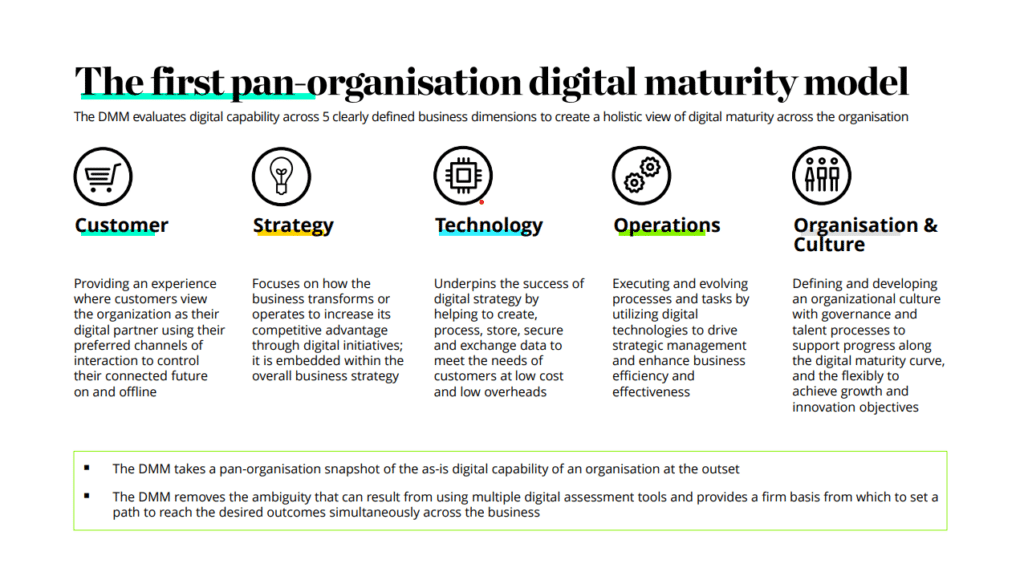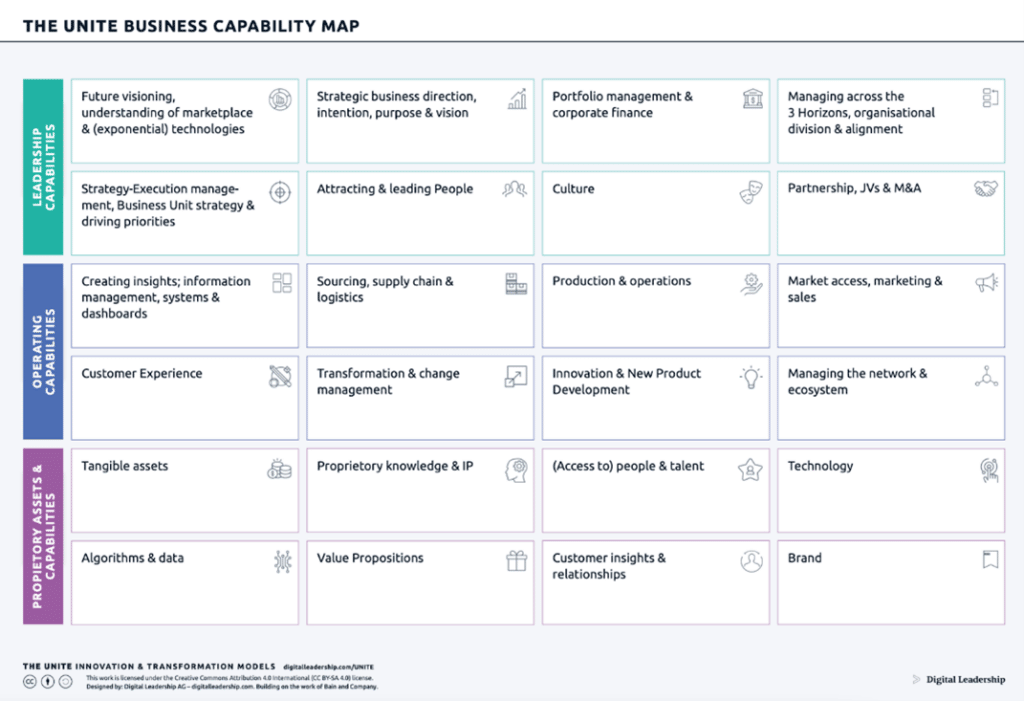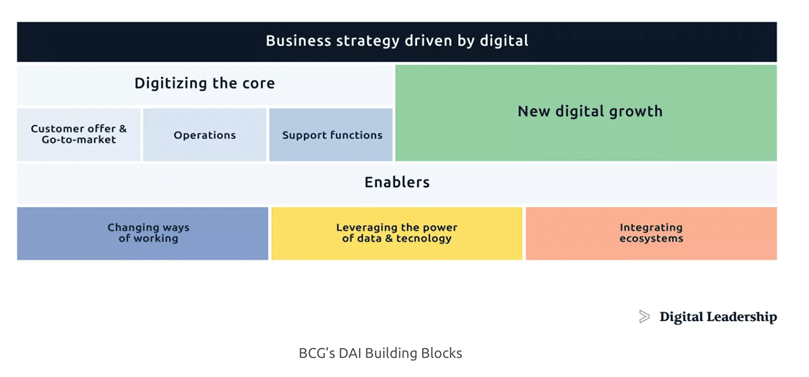Digital Transformation Maturity Model
A digital transformation maturity assessment can help you be more proactive — highlighting opportunities to leverage technology to improve.
Table of Content
Often, companies keep doing the same things until they no longer work.
Unfortunately, they typically don’t find this out until it’s too late — after customer expectations have changed, employee expectations have evolved, or disaster strikes and you’re left picking up the pieces.
Outdated tech, analog processes, and too much comfort with the status quo can block growth and limit flexibility — particularly in a fast-moving environment where agility and innovation are a business’ biggest differentiators.
A digital transformation maturity model can help you be more proactive — highlighting opportunities to leverage technology to improve your business.
In this article, we’ll explain how and look at a few models you might use to benchmark your progress.
Like the digital transformation readiness assessment, a digital transformation maturity model — also known as a digital maturity model, or DMM — aims to provide a baseline understanding of your organization’s current digital strategies, systems, and processes.
But, the readiness assessment is designed for orgs that haven’t yet started the DX process, whereas the DX maturity model helps those already in the midst of a transformation map out the next phases in their journey.
So, in this context, digital maturity refers to your organization’s all-around capabilities. Typically, maturity is measured in four or five stages that might look something like this:
The DMM essentially acts as a framework you can use to get a better sense of your org’s current level of digital maturity – which you can then use to build a roadmap for achieving DX goals, planning future initiatives, and measuring progress.
Digital transformation maturity models are a diverse bunch.
Some DMMs focus on specific business units such as sales or marketing, whereas others center on specific capabilities like innovation, AI, or data management. Other models look at the bigger picture.
In any case, DMMs provide data-backed insights into how your digital transformation journey is going thus far – so you can figure out your next steps.
Below, we’ve included some popular models you might use to assess your digital maturity from a variety of angles.
The Deloitte Digital Maturity Model (DMM) measures digital maturity across five business dimensions:
Each core dimension breaks down into a series of sub-dimensions (pictured below) that are then split into individual criteria for measuring digital maturity.

Source: Deloitte Digital Maturity Model
According to Deloitte, using the DMM at each phase in the DX journey allows orgs to identify gaps and figure out what areas to focus on next.
Experts emphasize that this model was not designed to replace an overarching DX framework, but that it’s intended to serve as a guide business leaders can use throughout this process. Its primary purpose is to help leaders prioritize digital capabilities – say, strategy or people, based on their ambitions.
First, it’s understanding the current state, defining high-level ambitions, and identifying the opportunities that will unlock the desired future state.
From there, leaders can prioritize capabilities based on business objectives, refine plans, and put them into action.
Then, finally, it’s measuring the impact of DX initiatives and evaluating the effectiveness of key processes.
In other words, it’s designed to support the continuous improvement cycles that define modern digital transformation journeys.
The UNITE Business Capability Map provides a visual summary of your company’s capabilities so that you can figure out how to best leverage existing strengths and assets for transformation initiatives and other future improvements.
Like the Deloitte DMM, UNITE’s model is designed to help business leaders size up digital capabilities on an org-wide level. But, as you’ll notice in the screenshot below, the UNITE map measures an organization’s strengths and weaknesses in a slightly different way – with three main categories: Leadership, Operations, and Proprietary Assets, each containing eight sub-capabilities.

Essentially, the map should give you a clear understanding of your company’s capabilities so that you can “deal with them appropriately.”
That might mean cutting costs, prioritizing innovation, or leveling up your change management strategy – whatever might help you address critical gaps or take advantage of a high-impact opportunity.
The Three Horizons Model is a framework that aims to help organizations build a foundation for innovation.
This approach, initially developed by McKinsey, groups projects into three categories, or “horizons,” that progressively move from optimizing core business models and processes to using technology to create game-changing new revenue streams and secure a competitive advantage.
As you can see in the graphic below, each “Horizon” represents a different type of initiative.
At level 1, you have smaller upgrades like process optimizations that, while necessary, don’t offer much in terms of a competitive advantage. Horizon 2 includes emerging opportunities that help orgs expand their reach into new segments or markets. Then, there’s Horizon 3 – which represents the most innovative and disruptive DX initiatives.

According to Microsoft, the Three Horizons Model is ideal for building an innovation architecture because it centers on people, processes, and outcomes. But, it was developed back in 2009. Tech advances and other converging forces have changed how time factors into the bigger picture.
Three Horizons assumes that breakthrough innovations take years of research and development, a luxury most companies no longer have. These days, orgs can implement Horizon 3 business models ASAP – repurposing Horizon 1 initiatives and reusable components into something with far more disruptive potential.
BCG’s Digital Acceleration Index (DAI) is a framework designed to help organizations audit their current digital capabilities against six key building blocks:

Now, the Digital Acceleration Index is unique in a couple of key ways. It’s a questionnaire-based assessment that measures an organization’s digital maturity across 42 dimensions (sub-categories within each core building block).
Unlike models like the UNITE map, which can be downloaded for free, the index is available exclusively to BCG clients through three different pricing tiers: Light, Full, and Extended.
The Extended plan allows clients to measure their maturity against competitors using data from the DAI database — which gathers insights from 8000+ orgs across 1500+ data points. BCG continuously collects data from participating orgs and uses its findings to update maturity benchmarks and rank companies against their peers.
It’s designed to be used as a diagnostic tool that helps business leaders ID where they’re losing ground to competitors, gaining traction, and what areas they should focus on to become more competitive.
So, while costs might be a barrier for some companies, you can get a more objective measure of how you stack up against the competition.
The digital maturity models featured above only represent a fraction of the DMMs that are out there.
You might find that there’s another model – or multiple models – better suited to measuring maturity in context with your industry, business goals, or the needs of your customers and stakeholders.
That said, it’s important to understand that DMMs are just analog templates. They’re designed to help you organize your digital transformation progress, plans, and goals in a way that enables you to identify next steps and put them into action.
They don’t tell you what to do next, nor can they prevent you from misinterpreting your data or making poor decisions.
Velosio provides a range of services to support your business transformation. We help clients evaluate their current solutions and processes and recommend the best path forward for achieving critical goals, minimizing risk, and maintaining business continuity. Contact us today to learn more.
It’s a tool that helps organizations already undergoing digital transformation understand where they are in the process and plan future steps by evaluating their digital strategies, systems, and processes. It shows how digitally capable an organization is and helps create a roadmap for improvement.
The 4 stages of digital maturity are:
These levels describe an organization’s increasing capability:
McKinsey uses the Digital Quotient (DQ) to measure digital maturity across four areas:
Talk to us about how Velosio can help you realize business value faster with end-to-end solutions and cloud services.